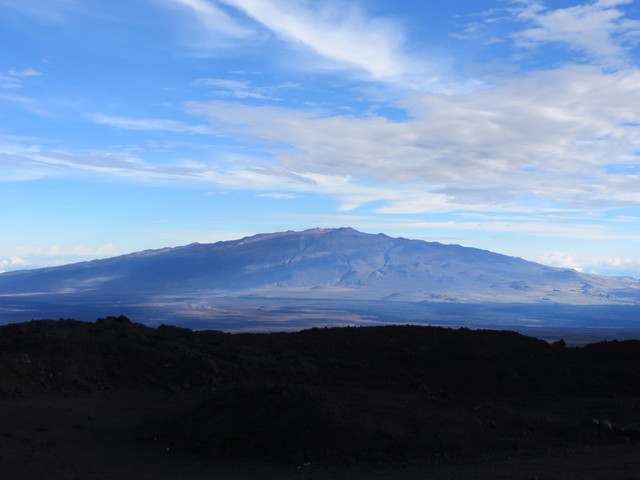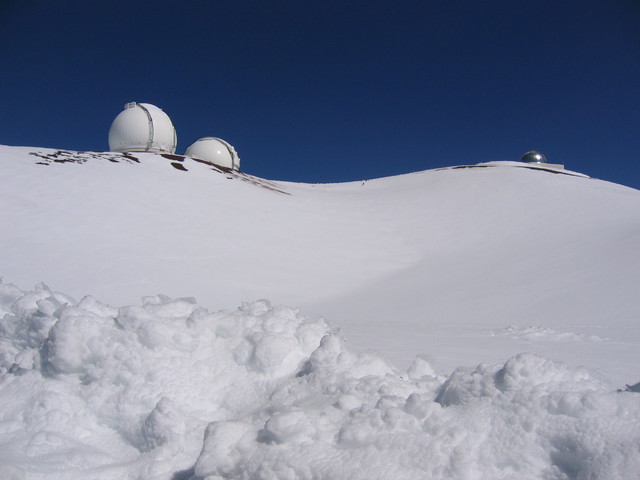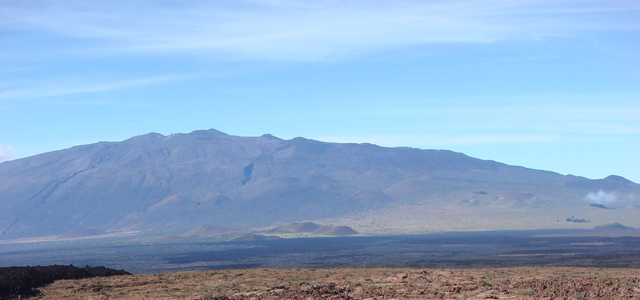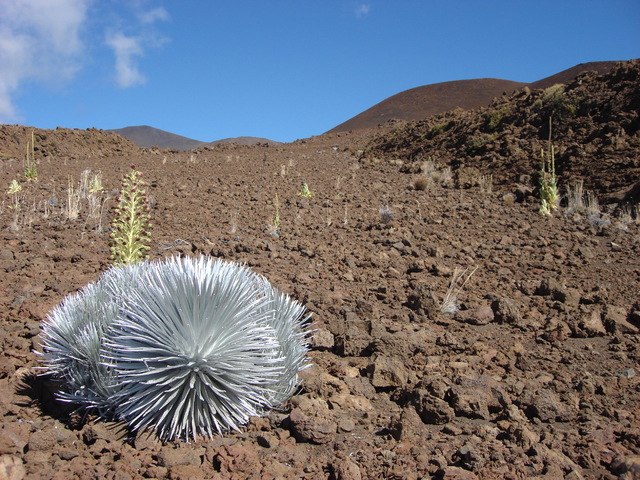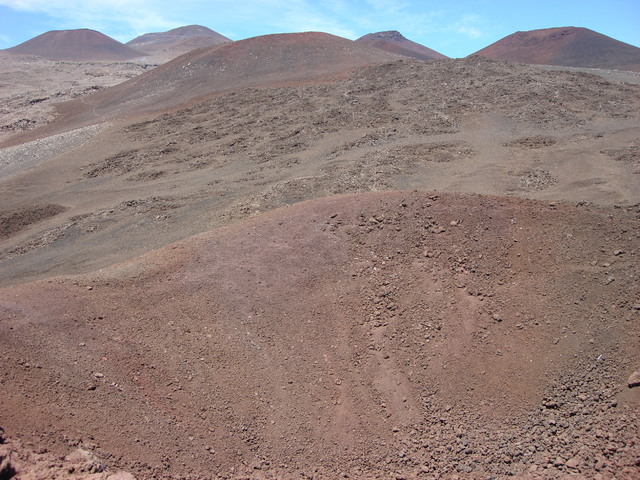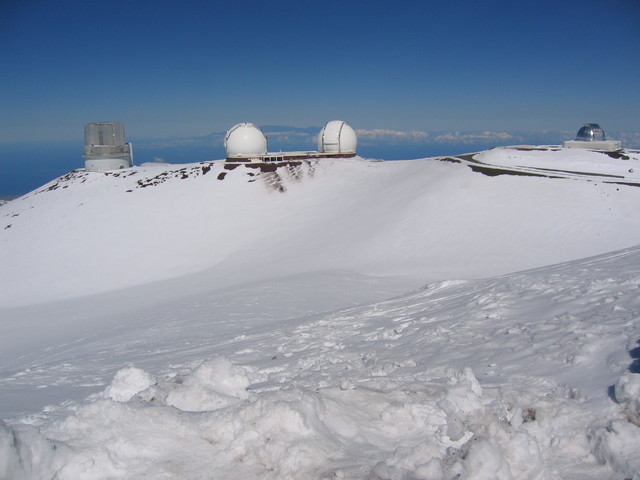Over the next few weeks, West Hawaii Today will be taking a closer look at each of the volcanoes on and around Hawaii Island. This week: Mauna Kea.
Mauna Kea’s summit, the tallest place in Hawaii and one of the few places in the world where you can drive from sea level to nearly 14,000 feet in two hours — receives thousands of visitors each year.
It’s a place sacred to Native Hawaiians and one of the best vantages in the world to glimpse beyond our planet.
The volcano is a grand dame — Mauna Kea’s first rocks protruded above the sea almost a million years ago — and thanks to its advanced evolutionary stage, it even looks different from the island’s other volcanoes. Its slopes are twice as steep as Mauna Loa’s, cinder cones pock the summit which no longer features a caldera that was likely filled in 250,000 years ago, just after Kilauea had begun to form.
“As volcanoes begin to move away from the hot spot, and the rate of melting begins to slow down, lava can fill out and totally obscure the caldera,” said Don Swanson, a geologist and former director of the Hawaiian Volcano Observatory (HVO).
It’s all part of the natural process of an evolving volcano. Though Mauna Kea’s last eruptive period was between 4,000 and 6,000 years ago, volcanologists still say it’s active.
“There are no Hawaiian volcanoes that have come to life after this long of a lapse,” Swanson said. “But there are other Hawaiian volcanoes that have come to life after long pauses and there are volcanoes around the world that have come back to life after this length of time. From them, we can judge, or make an informed guess, that Mauna Kea will erupt again.”
Were that to happen, said Swanson, “there would be a long buildup of seismicity, certainly over weeks, maybe months. We wouldn’t just wake up one morning and say ‘Whoa! Mauna Kea is erupting.’”
When it does erupt “It will be violent but small — a firecracker vs. dynamite kind of thing.”
And, if history is any indication, there will be an accompanying lava flow. HVO does monitor Mauna Kea with GPS stations and seismometers—equipment the organization will have to augment, says Swanson, were the volcano to experience any real change.
Though magma-related movement within the volcano has never been detected, earthquakes are common on Mauna Kea, said Swanson.
“Most are below 3.0 [on the Richter scale] and are not felt on the surface. It looks like there were around ten earthquakes with a magnitude two or less with depths between 20 to 40 kilometers, in the past month.” Shifting and settling rocks because of the weight of the volcano and its depression of Earth’s crust cause the earthquakes. In fact, the entire island sinks two to three millimeters annually because of its massive features.
In addition to appearing physically different from other the other active Hawaii Island volcanoes, Mauna Kea’s lava is also chemically different.
“As the plate carries volcanoes off the hot spot,” explained Swanson, “the rate of melting in the mantle decreases and the whole magma production factory slows down. When it slows down, magma is slightly cooler, less material is being melted and this gives rise to a magma that has a somewhat different composition—you actually often find similar lavas in young volcanoes that are moving toward the core of the hotspot in a kind of reverse evolution.”
All of Hawaii Island’s volcanoes produce lava with slightly different chemical compositions thanks to locations relative to the Hawaiian hotspot. There are also unique chemical signatures in rocks that follow line running from Hawaii Island as far northwest as Oahu.
“It turns out there is a distinct chemical difference between Kilauea and Mauna Kea on the one hand, and Mauna Loa, Hualalai and Loihi on the other,” said Swanson. “Magma that has erupted along those two lines are slightly different in terms of their isotopes…. It’s not very well understood yet why, but most scientists are in agreement that there is a distinction.”
Mauna Kea also has unique features that none of the others do—evidence that its flanks hosted glaciers during at least three periods in its history.
The most recent was between 13,000 and 40,000 years ago—the upside-down dark horseshoe shaped mounds of a terminal moraine can be spotted from the Saddle Road. Rocks on the volcano’s summit also bear grooves a few centimeters wide where sharp pebbles and even boulders were scraped across the bedrock under the weight of a glacier.
There was even a time when hot lava from an eruption coincided with the presence of glaciers—their collision produced really fine glassy formations high on the mountain’s flanks.
“Hawaiians used to quarry this to make adzes (axe-like tools) and other kinds of tools,” said Swanson. This may not be the last of Mauna Kea’s glaciers, according to Swanson: “We’re probably just in an interglacial period now.”







